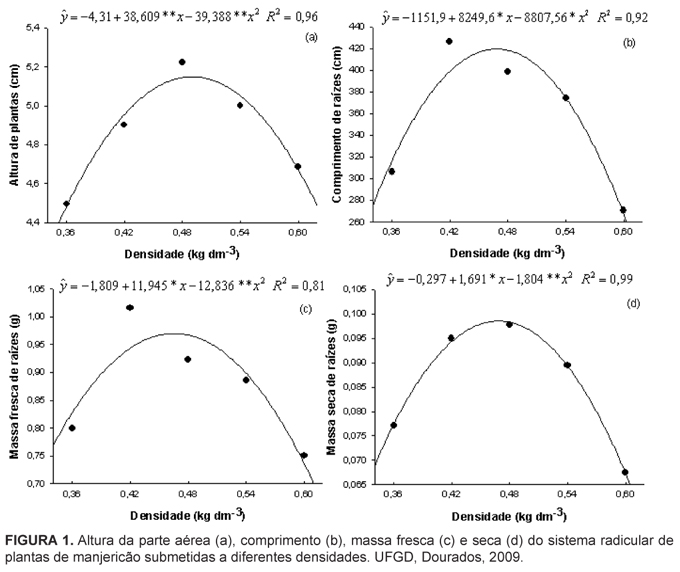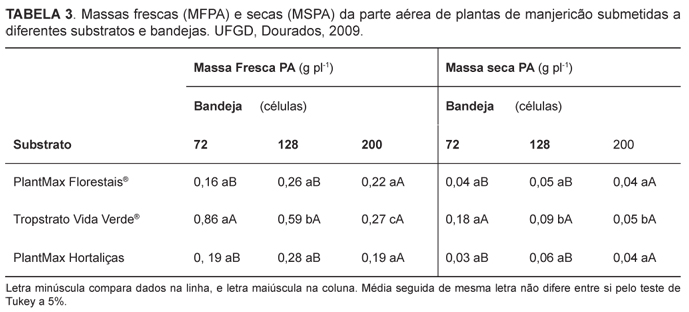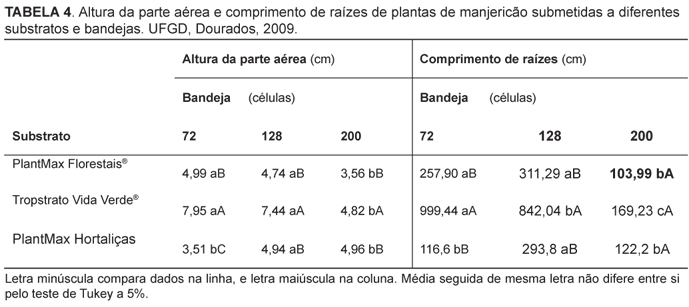One of the most important stages in the production of basil is the development of seedlings. In this step, care with the container and the substrate is essential, because it directly affects the root growth and architecture, as well as the supply of nutrients. Thus, the objective of this study was to evaluate the development of basil seedlings (Ocimum basilicum L.) influenced by the type and density of different substrates, grown in polystyrene trays with different cell numbers. The experiment was conducted at the Gardening area of the Federal University of Grande Dourados (UFGD) inDourados-MS, Brazil.The experimental design was a randomized block with fivereplications, with treatments arranged in a 3x3x5 factorial design, with three types of polystyrene trays with 72, 128 and 200 cells, with internal volumes of 124.3; 44.8 and 17.7 mL, respectively. We used three types of substrates (PlantMax Florestais®; Tropstrato Vida Verde®and PlantMax Hortaliças HA®) and five densities of substrate (0.36, 0.42, 0.48, 0.54 and 0.60 kg dm-3). After 78 days of plant emergence, we evaluatedthem regarding: plant height, fresh and dry shoot and root, and root length. The commercial production of basil seedlings was improved with the use of the substrate Tropstrato Vida Verde® in a 72 cell tray associated with the density of 0.47 kg dm-3.
Ocimum basilicum; commercial substrate; cell number






